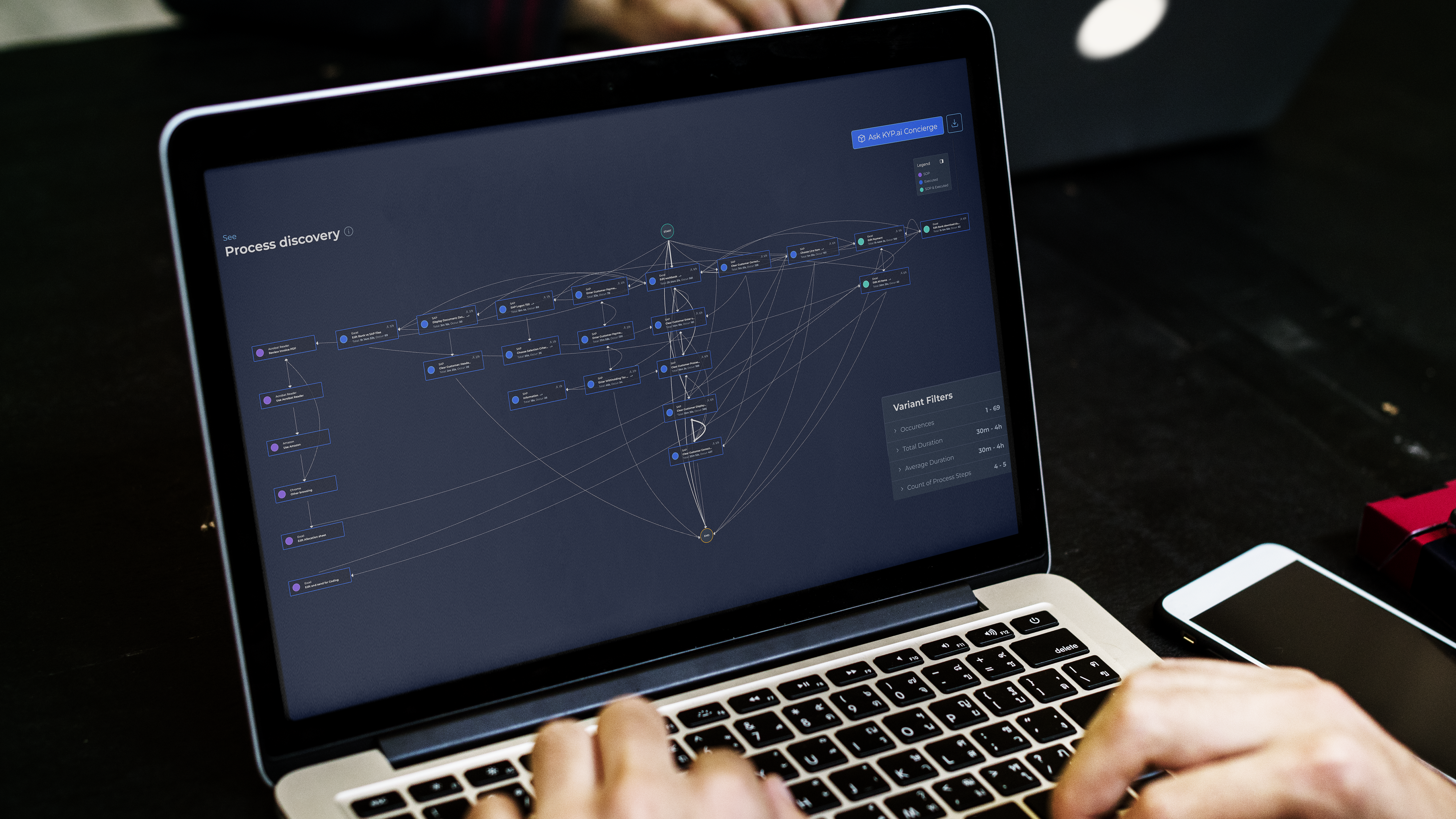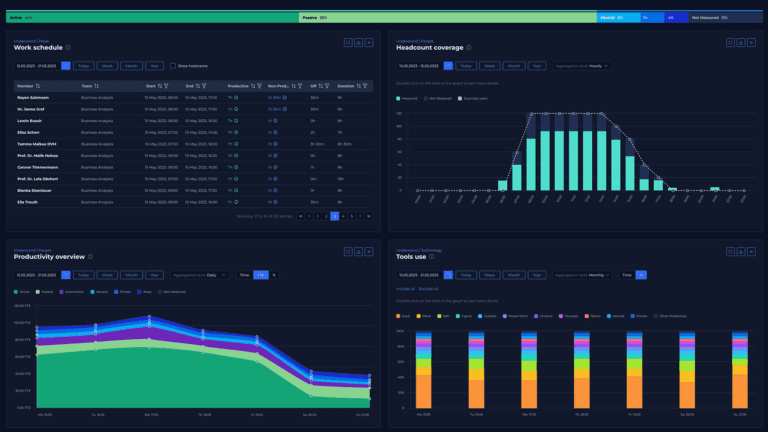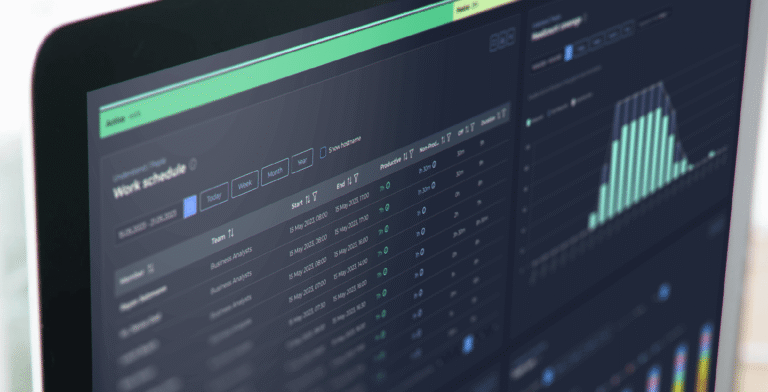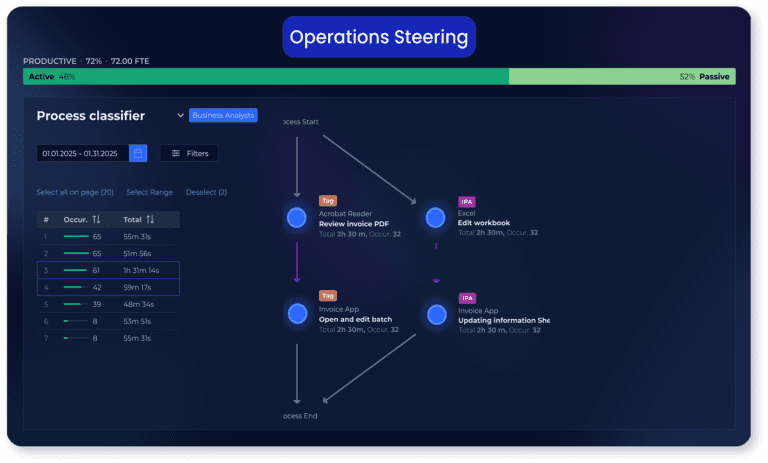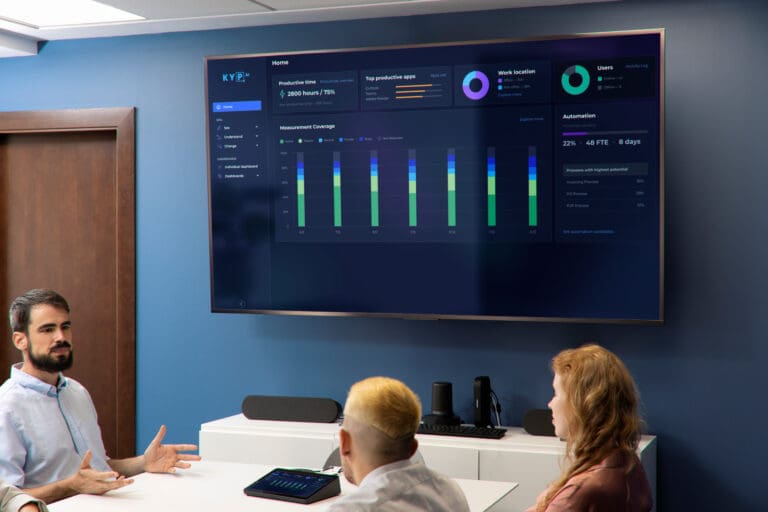| Summary: Workforce analytics transforms HR from reactive to strategic by delivering deep, real-time insights into talent, performance, and engagement. Unlike basic reports, it helps predict challenges and optimize outcomes. With KYP.ai, organizations gain contextualized, actionable intelligence by linking people data with tasks and systems, fueling smarter decisions, better planning, and more resilient, high-performing teams. |
People are not resources. They’re the momentum behind your business. Every strategy, product, or customer experience traces back to human input. In a post-pandemic world where work expectations have shifted and hybrid models are the norm, organizations can no longer afford guesswork when managing their workforce.
The workplace has become more dynamic, digital, and complex. Skills evolve fast, roles blur across departments, and employees expect clarity, purpose, and growth. Leaders are challenged to keep up, not with workforce changes, but with the need for agility and precision in every HR decision.
This is where Workforce Analytics steps in. Beyond just reports and dashboards, it offers strategic insight into what’s happening, why, and how to act. And with platforms like KYP.ai, the story doesn’t end at the people layer. It expands to include task patterns, process bottlenecks, and system usage, contextualizing workforce performance in the bigger operational picture. That’s the leap from observing work to understanding it and using that understanding to automate, align, and optimize at scale.
What Is Workforce Analytics?
Workforce Analytics, sometimes called people analytics or workforce intelligence, is the practice of collecting, analyzing, and applying data to improve people-related decision-making.
It reaches across:
- Hiring
- Engagement
- Learning and development
- Retention
- Organizational forecasting
It is powerful, not the data itself but the context and clarity it provides. Traditional reports may tell you how many employees left. Workforce analytics answers why they left, when the risk started showing, and what could have been done to prevent it.
In advanced applications, workforce analytics doesn’t live in a silo. It factors in:
- Digital behaviors
- Process complexity
- System friction
- Task switching
- Burnout signals
Individual Performance Analytics lets employees gain private, constructive insights about their work patterns. This self-awareness builds accountability and empowers improvement, without micromanagement.
Why Workforce Analytics Is Crucial Today
The workplace has transformed. Static job descriptions and once-a-year reviews no longer cut it. Here’s why workforce analytics has become essential:
- Tool sprawl and hybrid work have made it harder to see how work is getting done.
- Transparency and equity are now expectations, not perks. Decisions need to be data-backed, not gut-driven.
- Talent agility is a must. Businesses can’t afford to discover a skills gap only after it impacts performance.
- Real-time visibility is the baseline, from workload management to upskilling initiatives.
KYP.ai addresses these challenges by continuously analyzing how people engage with systems, processes, and tasks. Instead of just measuring outcomes, it helps you understand their context.
- Are employees spread too thin?
- Is the tech stack supporting productivity or getting in the way?
- Which teams are ready for more?
These are no longer blind spots, they’re visible, trackable, and fixable.
Key Benefits of Workforce Analytics with KYP.ai
- Improved Decision-Making: Hiring, promotions, and team structures shouldn’t be based on assumptions. Workforce analytics clarifies what works, what doesn’t, and where to pivot.
- Reduced Operational Costs: Workforce analytics highlights inefficient training programs, duplicated work, or underutilized tools, showing where waste hides.
- Enhanced Engagement & Productivity: Sometimes, people aren’t disengaged, overburdened, under-supported, or trapped in broken workflows. KYP.ai connects digital friction and human fatigue, giving you the insight to create better workdays.
- Proactive Talent Strategy: Forecasting talent needs used to be a reactive exercise. With real-time and historical data, you can see where demand is rising, which skills will be critical next quarter, and what to prepare for today.
- Smarter Workforce Planning: Instead of planning around assumptions, HR leaders can now align hiring, development, and team structuring with actual business demand. KYP.ai makes these adjustments dynamic, so your workforce strategy evolves with your goals.
Types of Workforce Analytics
Different layers of analytics answer different questions. Here’s a breakdown:
1. Labor Market Analytics
Track talent supply and demand trends, identify which skills are becoming scarce, and benchmark compensation across markets. Helps inform hiring strategies and competitive positioning.
2. Recruitment & Talent Acquisition Analytics
Measure time-to-fill, source effectiveness, and candidate quality. See which channels bring in top performers and which steps in the process cause drop-offs.
3. Productivity Analytics
Beyond output, assess how work happens, collaboration depth, task-switching frequency, and time-on-tool analysis. KYP.ai excels here, mapping digital work behaviors to spotlight inefficiencies and opportunities.
4. Learning & Development Analytics
See if training translates into performance. Track application of new skills, learning completion rates, and on-the-job impact.
5. Engagement & Retention Analytics
Use signals like absenteeism, changes in output, or satisfaction scores to anticipate disengagement. Early insights mean better interventions.
Best Practices for Implementing Workforce Analytics

- Align Analytics with Business Goals: Start with a purpose. If your goal is growth, retention, or innovation, define how people data supports it. Bring leadership into the conversation early.
- Define and Track the Right KPIs: Metrics like net productivity per employee, time-to-efficiency for new hires, or reduction in burnout risks tell more than headcount or attrition rates.
- Invest in the Right Technology: Choose platforms that unify operational, HR, and system-level data. KYP.ai is built to integrate across IT, HR, and productivity layers, making it an ideal foundation.
- Translate Data into Action: Insights are only helpful if applied. Build processes where workforce data drives real workflow, policy, and planning changes.
- Keep Listening: Your workforce isn’t static. Regularly re-evaluate your models and feedback loops. Stay tuned to what’s shifting.
Industry Applications of Workforce Analytics
1. Real Estate
Predict staffing needs based on property turnover, occupancy rates, and seasonal trends. Helps optimize leasing operations, maintenance scheduling, and property management efficiency.
2. Customer Service
Use workforce analytics to staff dynamically, measure agent effectiveness, and identify burnout risks. Helps improve response time and customer satisfaction across regions or teams.
3. Manufacturing & Services
Track labor productivity by shift, machine uptime by team, or output per operator. Combine with real-time process data from KYP.ai to reduce downtime and maximize throughput.
The Future of Workforce Analytics with KYP.ai
Workforce analytics is rapidly evolving from descriptive to prescriptive and even autonomous. The future is about action, not just observation.
- AI and Automation: Insights will be packaged into suggested next steps or triggered responses, and no dashboard digging is required.
- Low-Code Accessibility: HR and ops leaders, not just analysts, will build and adjust models on the fly.
- Data Ethics & Privacy: Transparent, employee-respecting frameworks will be mandatory, not optional.
- Agentic AI: Platforms like KYP.ai are paving the way with AI agents that understand patterns, recommend automation, and even script next actions.
KYP.ai is not waiting for this future; it’s shaping it. Merging workforce data with real-time process visibility creates a system of intelligence that powers everything from headcount planning to burnout prevention to intelligent automation.
Conclusion
In a world where agility, performance, and experience are inseparable, workforce analytics is no longer a luxury. It’s how businesses scale without burning out their teams and how leaders make strategic choices backed by truth, not assumptions.
And with KYP.ai, you’re not just analyzing people. You’re connecting the dots between behavior, systems, and results. You’re making better decisions faster and turning those decisions into action.
The time to adopt workforce intelligence is now. The insight is there, whether you’re solving today’s staffing puzzle or preparing for tomorrow’s transformation. You just need the right platform to unlock it.
FAQs
Q: What makes workforce analytics different from traditional HR metrics?
A: Traditional metrics track what happened. Workforce analytics reveals why it happened, what’s likely next, and how to respond, enabling strategic, real-time decision-making.
Q: How does KYP.ai support workforce analytics?
A: KYP.ai captures and contextualizes workforce behavior, combining it with process and system data to uncover inefficiencies, identify burnout risks, and optimize performance.
Q: Can workforce analytics help reduce employee burnout?
A: Yes. By analyzing workload distribution, task switching, and system friction, workforce analytics surfaces early burnout signals, allowing leaders to act before performance dips.
Q: What’s required to start using workforce analytics?
A: Begin with a clear goal, define the right KPIs, and adopt a platform like KYP.ai that integrates HR, IT, and productivity data securely and scalably.
Q: How do we ensure data privacy in workforce analytics?
A: Use platforms that prioritize encryption, role-based access, and anonymization. KYP.ai is designed with GDPR-aligned governance and privacy, ensuring compliance and trust.
Discover Your Productivity Potential – Book a Demo Today
Book Demo

